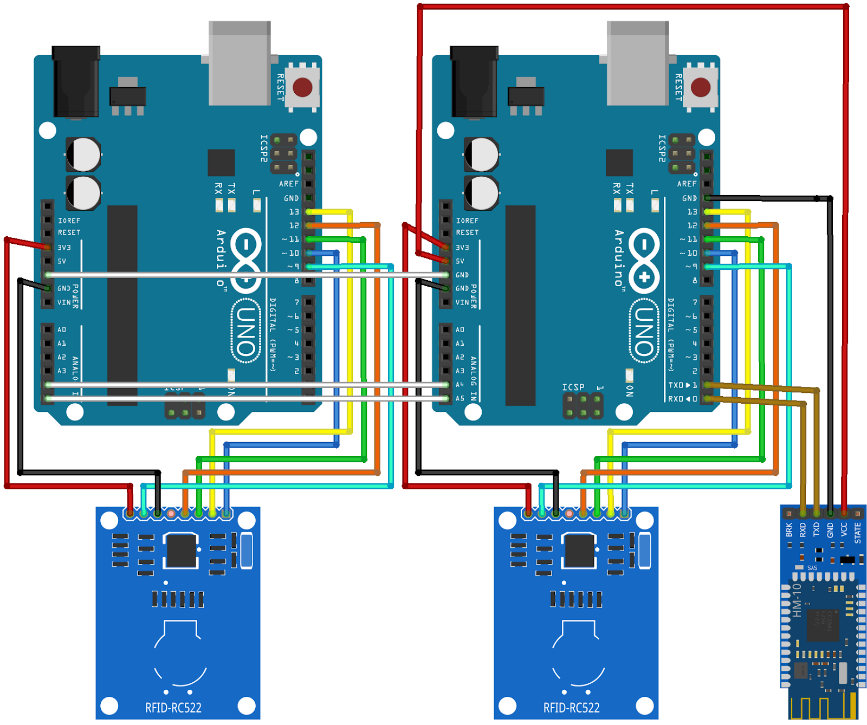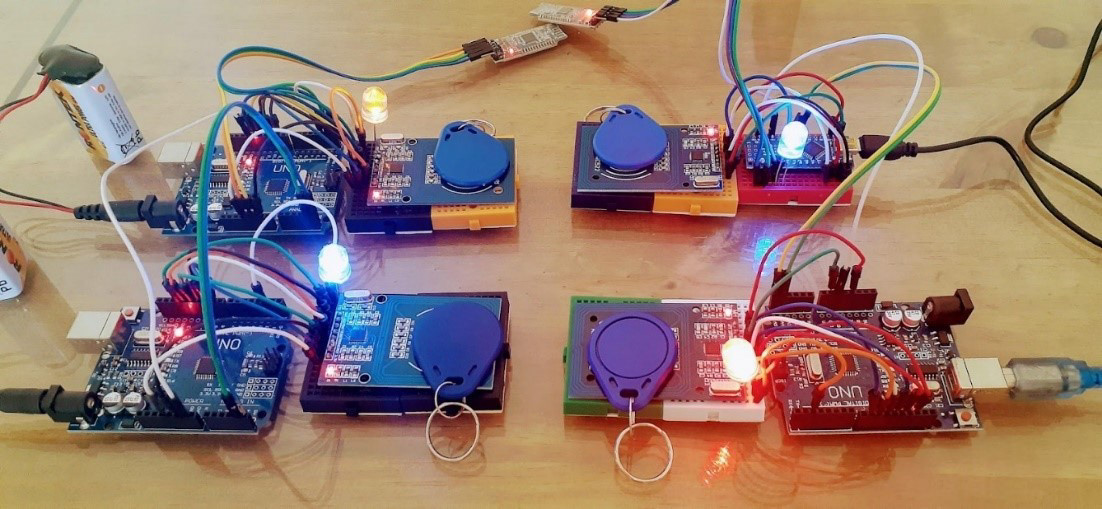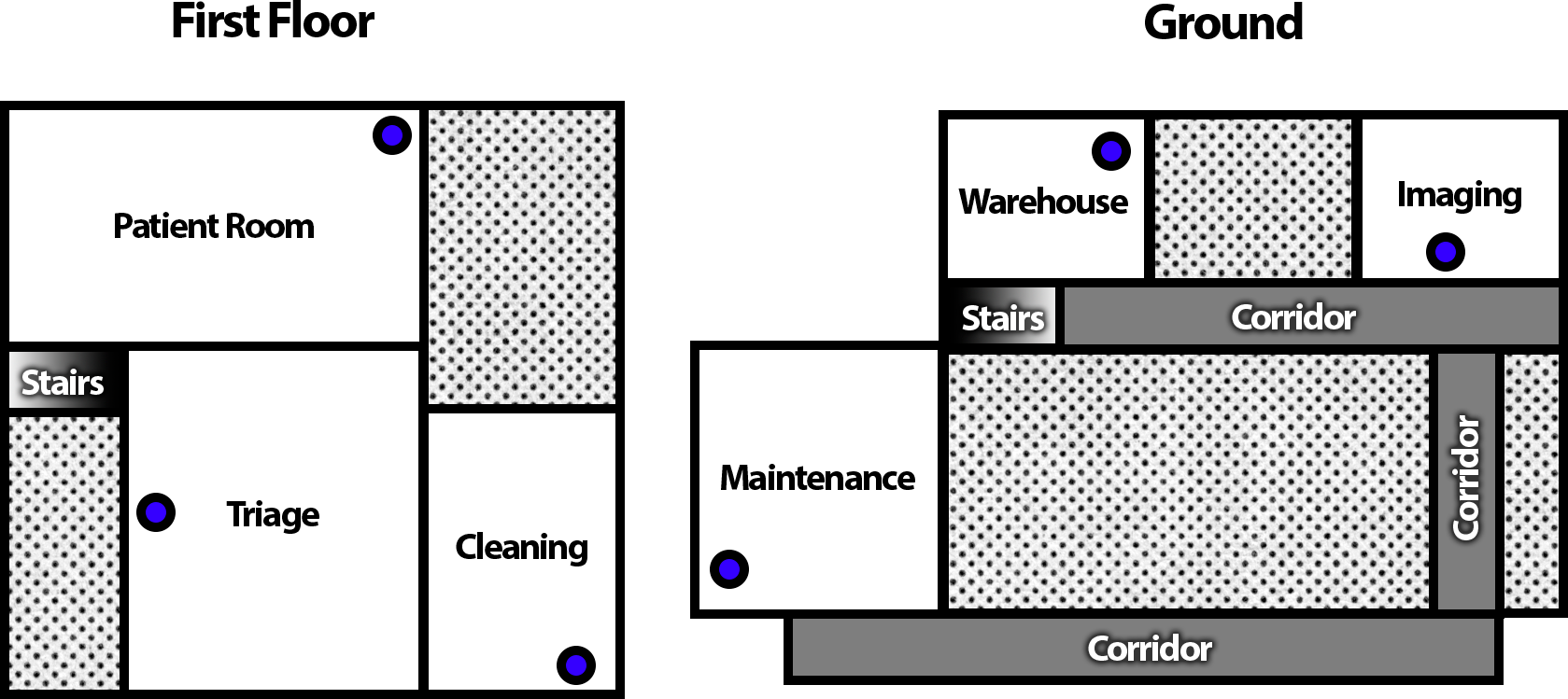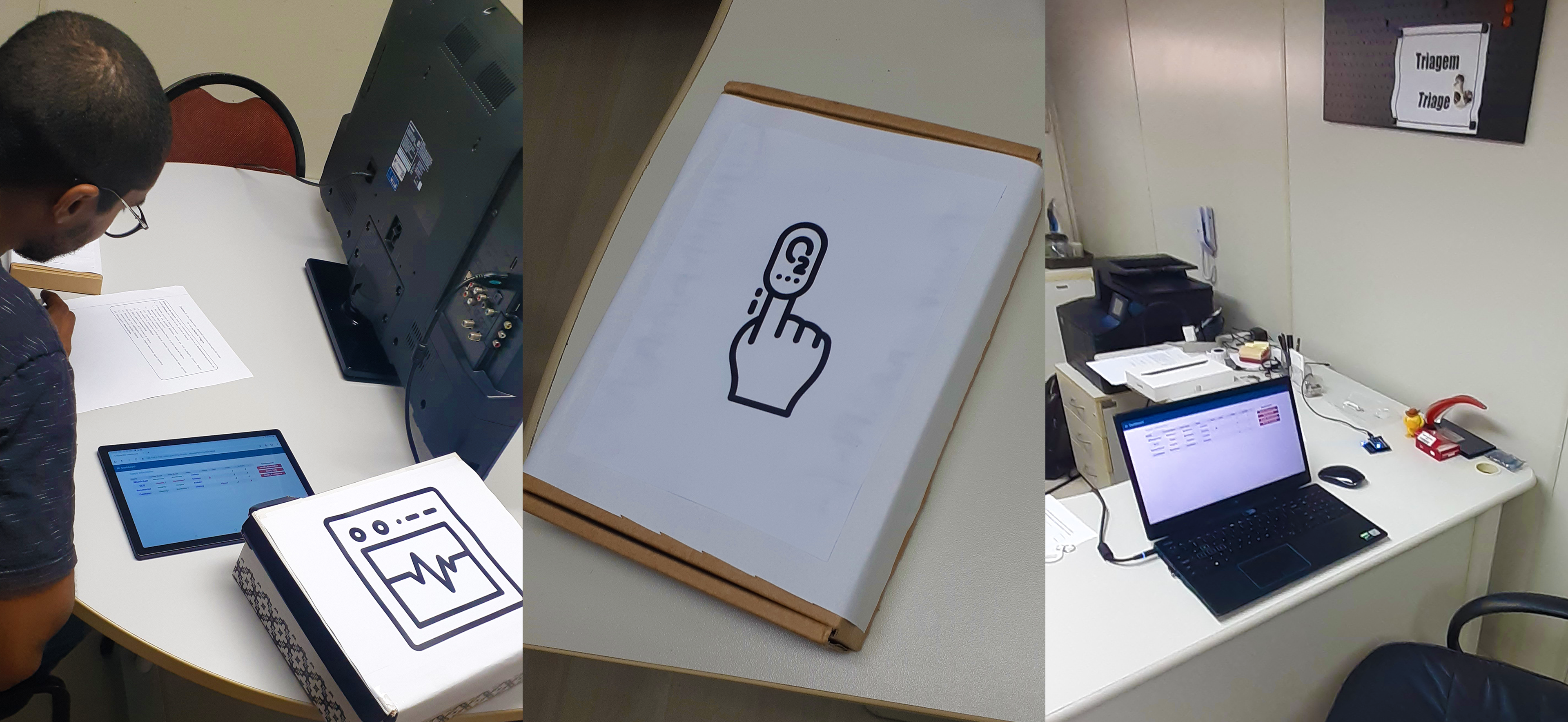During the PhD research, three IoT software systems were implemented. The first was an interactive smart table capable of identifying which objects were placed on its surface, aimed at organizing shelves in a hospital warehouse. The other two implementations were simulations of basic hospital environments, where simulated medical equipment could be managed in terms of their location (which room they were in) and their status (in use, dirty, broken, etc.).
Smart Table Prototype
A simplified smart table prototype was developed, consisting of a 2x2 grid of tiles, each equipped with an RC522 RFID reader and an Arduino. Each Arduino, identified within the system architecture by its matrix position, ran software that continuously monitored the presence of tagged objects on the RFID reader and immediately transmitted this information via Bluetooth to paired devices. To optimize resources, an HM-10 BLE module was shared by two Arduinos connected via the I2C protocol, eliminating the need for additional BLE modules.
The system included a backend running on a Raspberry Pi, featuring an MQTT broker powered by Mosquitto, a Node-RED dashboard for real-time visualization of the table's contents, and a MySQL database for storing object information. This setup enabled the prototype to identify objects on each tile and display relevant data on the dashboard.
Additionally, an alternative architecture was implemented where each tile used an ESP8266 module instead of an Arduino and BLE module.
While the prototype was designed to simulate a single table, each tile functioned independently, allowing them to be distributed across different rooms. This modular design was instrumental in shaping the concepts and ideas explored further during the PhD research.


Hospital Simulations
Toward the end of the doctoral research, experimental studies were conducted involving the development of IoT software systems to manage medical equipment in simulated hospital environments. Unlike the location method used in the earlier smart table prototype, which relied on close-range proximity, the new systems utilized WiFi-based positioning, allowing for localization within a range of several meters around a reader device. Objects were moved and located in real time across a set of rooms. Two implementations were carried out, which are described in detail in the thesis manuscript. These studies demonstrated the feasibility of implementing such low-cost IoT software system, and demonstrated how they can facilitate the work of health professionals.

